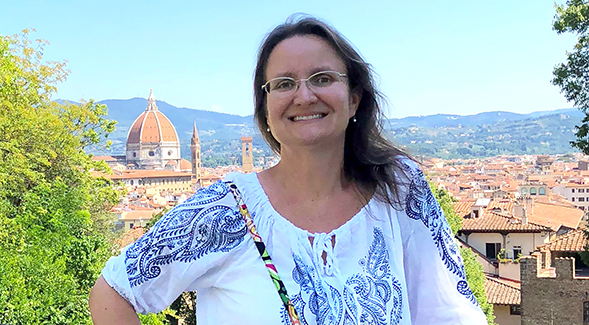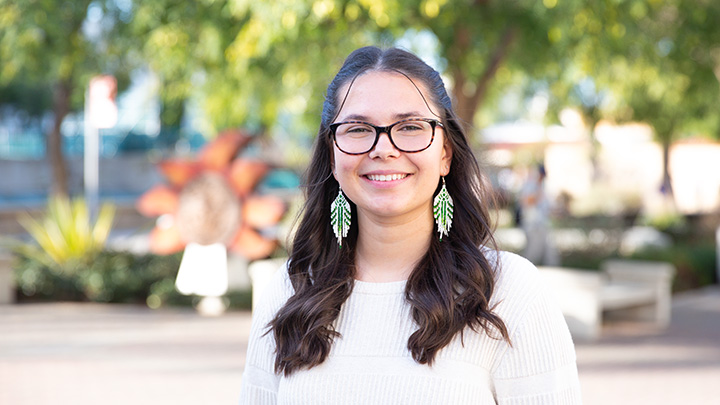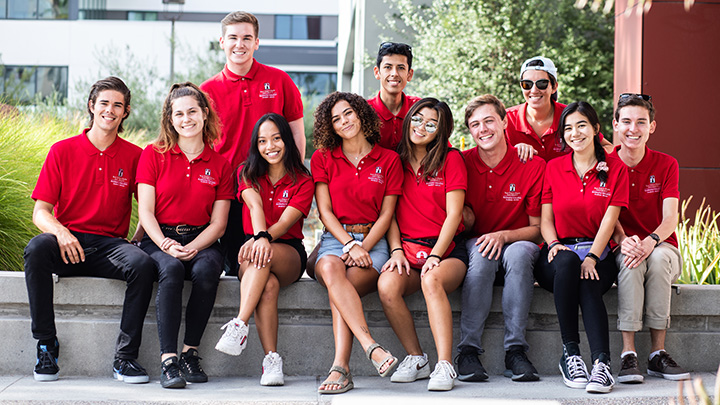CSU Honors History Professor with Faculty Innovation Award
Elizabeth Pollard, who encourages students to contribute to Wikipedia for learning that sticks, provided leadership to other faculty in the move to virtual-space education.

San Diego State University history professor Elizabeth Pollard, a digital innovator and key figure in the transition of the College of Arts and Letters (CAL) curriculum to the virtual space last spring, is among the recipients of the California State University Faculty Innovation and Leadership Awards, announced this week.
Pollard, who taught her first fully online course at the University of Pennsylvania in the late ‘90s and has been using Twitter as an educational tool for nearly a decade, began teaching at SDSU in 2002. In addition to teaching classes in world history, Roman history, and comics and history, she works with the university’s Instructional Technology Services, an office that provides support and leadership in the effective uses of academic technologies.
The 2020-21 CSU awards, announced Monday, honor those who have shown extraordinary leadership to advance student success. Systemwide, 25 faculty members were selected from more than 120 nominations.
“I’m deeply honored to receive this award in recognition of the many leadership roles I’ve taken at SDSU,” Pollard said. “I’m particularly gratified that this award comes in the midst of the COVID-19 prompted transition to online instruction.”
In addition to her work to facilitate the shift to virtual instruction, Pollard was co-facilitator of the Flexible Course Design Summer Institute, which helped nearly 1,000 SDSU faculty members enhance their skills and knowledge of teaching in the online environment.
In a nomination letter in May, then-interim CAL dean Glen McClish said Pollard “assumed the role of point person” to assist faculty in a “hurried, complex migration” of the CAL curriculum into the virtual space in March, when the COVID-19 pandemic forced a statewide stay-at-home order.
Pollard was also co-principal investigator of a general education project for CAL. She designed two new general-education classes, including “Why History Matters,” launched in 2019. She is co-author of two textbooks and has expertise in subjects as varied as witchcraft in the Roman world and digital humanities.
Pamella Lach, director of the college’s Digital Humanities Center and a frequent collaborator with Pollard, described her as “one of the most creative and passionate teachers I have ever known,” and credits Pollard for a significant improvement in students’ technical and research skills from innovations to a history course on Ancient Rome.
In June, her proposal with SDSU Popular Culture Librarian Pamela Jackson for a research project on “Conquering Social Issues through a Comic Studies Collaborative” was accepted for further consideration in SDSU President Adela de la Torre’s “Big Ideas” initiative.
Her interest in the transformative potential of studying comics also led to creation of a new course, Comics and History (History 157), being taught for the first time this fall. In addition to co-leading SDSU’s Comics Working Group, she is co-editing a volume of essays by SDSU faculty, “Conquering Social Issues Through Comics,” and is working on a graphic history exploring witchcraft accusation in Ancient Rome.
Jade Connolly-Cepurac, a history master’s and first-generation college student, credits Pollard with helping to spark her love of history. She likes the way Pollard has embraced new teaching tools and topics for the digital age.
“I had no clue that digital humanities existed and how rewarding it is to have a project that’s not a paper,” Connolly-Cepurac said. “I thought I was going to have to do a traditional history like studying the Kennedys. Now, as a graduate student, my focus allows me to research and talk about my love of horror films and all things witchy!”
Pollard is a co-author of “Worlds Together, Worlds Apart: A History of the World from the Beginnings of Humankind to the Present,” and the textbook’s Companion Reader, both used across the nation. Rather than disparaging social media, she also has written on the use of Twitter and Wikipedia in the classroom.
“When I started using Twitter in 2011 to open a back-channel with students in 500-seat courses, it was not the popular platform it is today,” Pollard said. “Now I continue to use Twitter to connect with students and fellow historians, but also to share what I’m working on and to welcome students into the creative process.”
She also coached students to contribute to dialogues on disputed historical topics in Wikipedia, saying it gave them “an opportunity to participate in the construction of knowledge.”
“Many students would get excited about the Wikipedia project because that work reached beyond the classroom,” Pollard said. “That’s part of why I frequently incorporate social media ... it gets students ‘doing’ and ‘engaging’ history on their own turf, outside the physical classroom in a way that feels authentic and meaningful to the students. That’s the kind of learning that sticks.”
Leslie L.J. Reilly contributed to this article.



